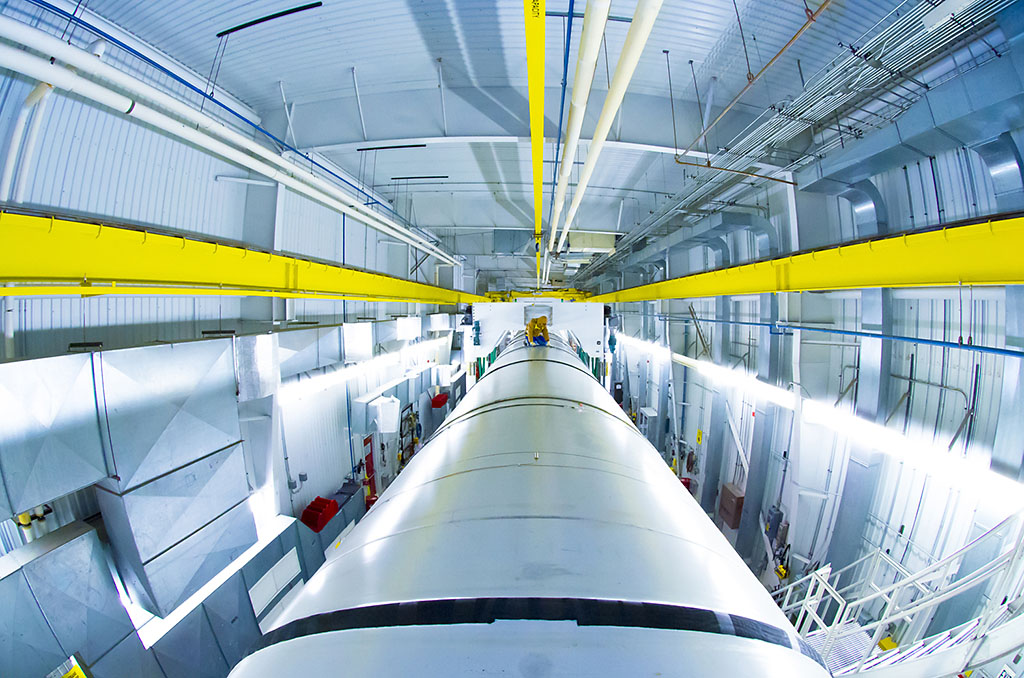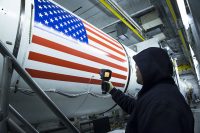An Orbital ATK technician inspects hardware and instrumentation on a full-scale, test version booster for NASA’s new rocket, the Space Launch System. The booster is being cooled to approximately 40 degrees Fahrenheit ahead of its second qualification ground test June 28 at Orbital ATK’s test facilities in Promontory, Utah. (Orbital ATK)
Home An Orbital ATK technician inspects hardware and instrumentation on a full-scale, test version booster for NASA’s new rocket, the Space Launch System. The booster is being cooled to approximately 40 degrees Fahrenheit ahead of its second qualification ground test June 28 at Orbital ATK’s test facilities in Promontory, Utah. (Orbital ATK) An Orbital ATK technician inspects hardware and instrumentation on a full-scale, test version booster for NASA's new rocket, the Space Launch System. The booster is being cooled to approximately 40 degrees Fahrenheit ahead of its second qualification ground test June 28 at Orbital ATK's test facilities in Promontory, Utah. (Orbital ATK)
An Orbital ATK technician inspects hardware and instrumentation on a full-scale, test version booster for NASA’s new rocket, the Space Launch System. The booster is being cooled to approximately 40 degrees Fahrenheit ahead of its second qualification ground test June 28 at Orbital ATK’s test facilities in Promontory, Utah. (Orbital ATK)



